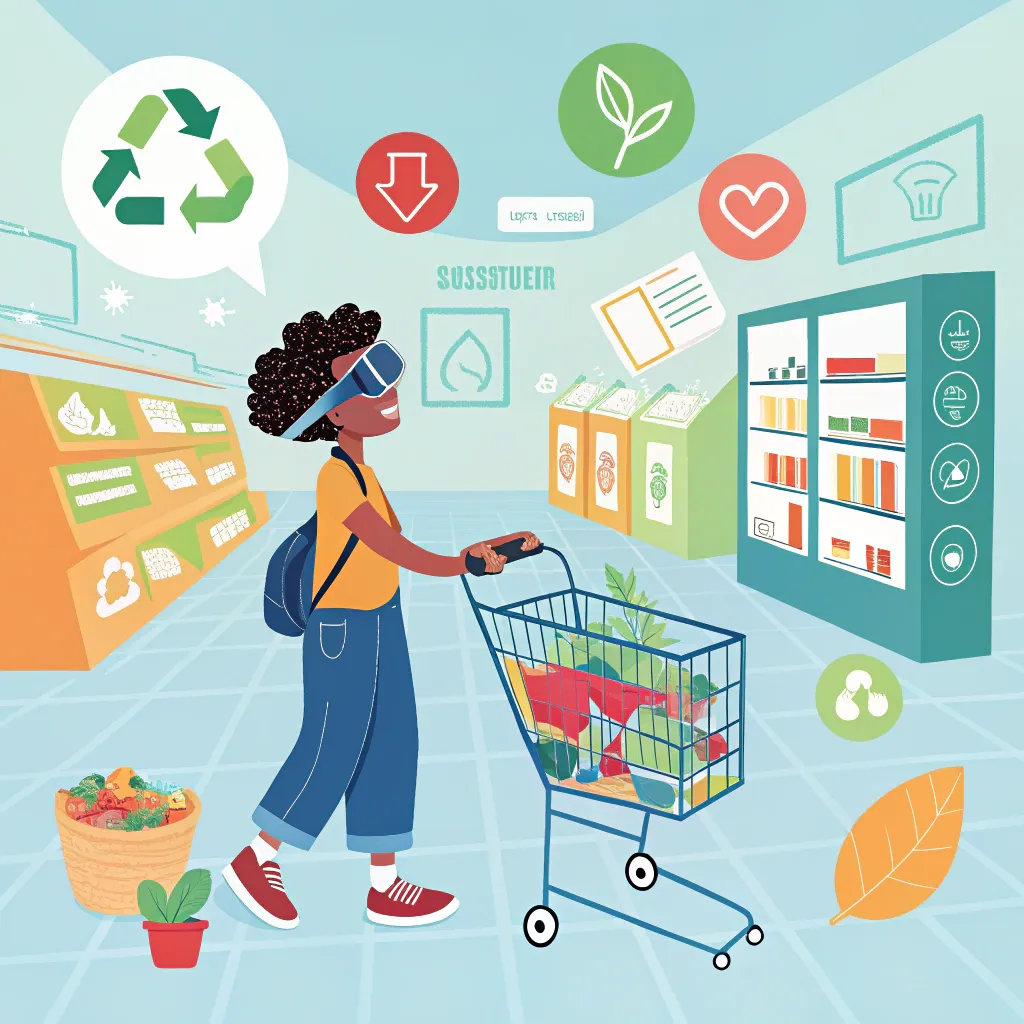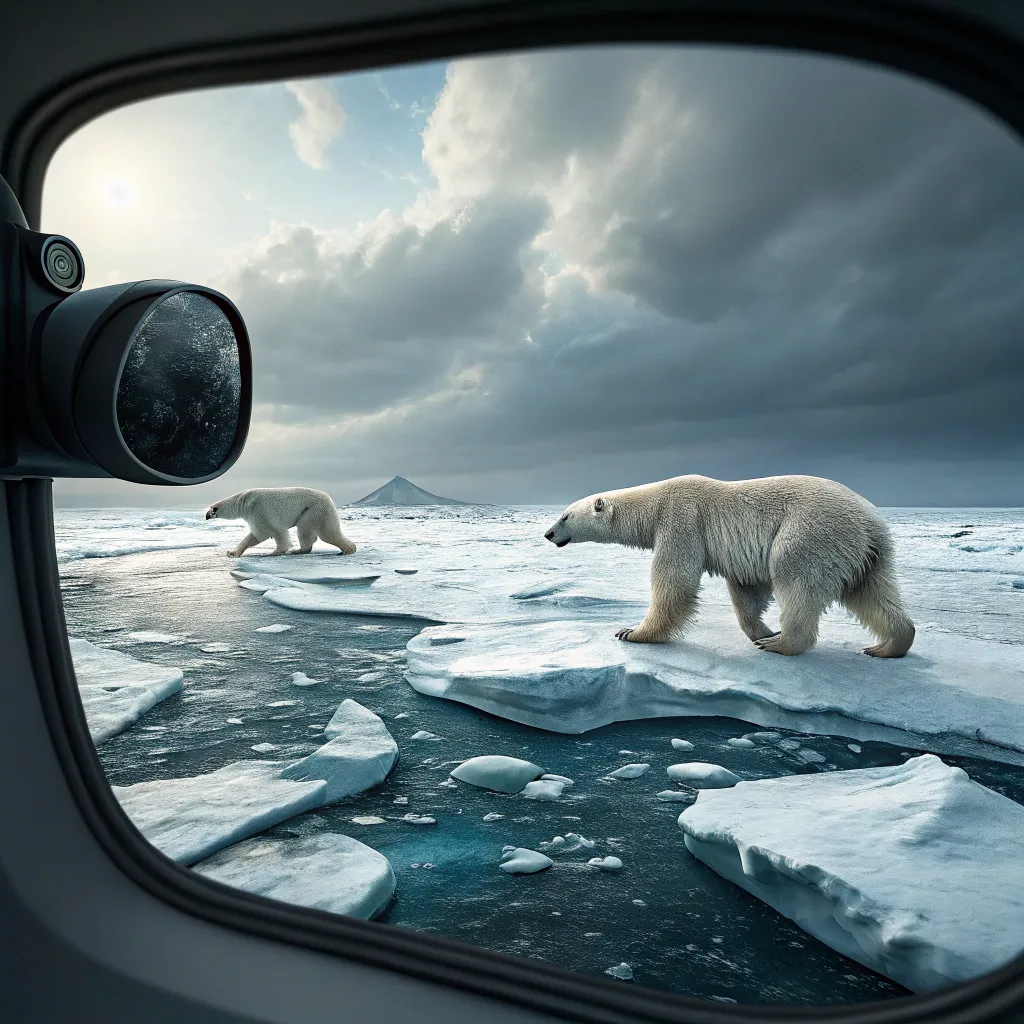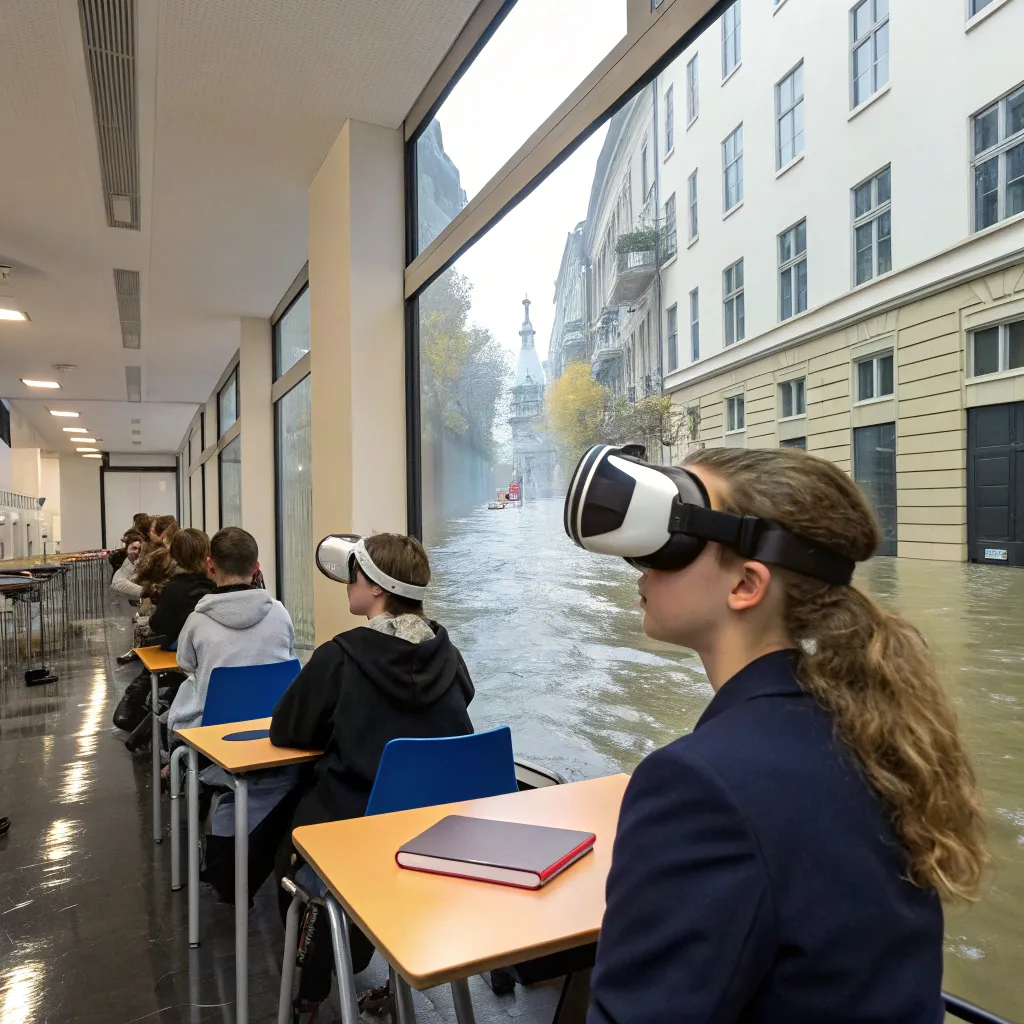What Are Climate VR Quests and Why Are They Revolutionary?
Imagine standing knee-deep in floodwaters or navigating a dried-up landscape during a simulated drought. That’s not a science fiction plot — it’s the new face of climate education. Climate VR quests are interactive, immersive experiences where students step into real-world environmental crises through virtual reality.
These simulations don’t just present dry facts. Instead, students take on the role of decision-makers: managing resources, preventing disasters, and witnessing firsthand the environmental consequences of their actions. The goal? To spark emotional engagement and deep understanding of the links between human behavior and the climate system.
By experiencing climate emergencies virtually — from rising sea levels and biodiversity collapse to extreme weather — learners build a stronger sense of responsibility and urgency. In a world where climate change is often invisible or abstract, VR brings the stakes front and center.
Real Projects Driving Change in Classrooms
Let’s look at some key examples of how immersive climate learning is already happening around the globe. These case studies demonstrate that this isn’t just a trend — it’s a growing educational movement backed by solid research.
Stanford Ocean Acidification Experience
This VR experience created by Stanford University lets users dive deep into the ocean to observe firsthand the effects of rising CO₂ levels on marine life. As the virtual journey progresses, the water becomes more acidic, and coral reefs deteriorate in real time.
📌 A study published in Frontiers in Psychology revealed that students who experienced this simulation showed an increased understanding of ocean acidification and were more motivated to act on climate issues. Emotional engagement here isn’t a byproduct — it’s the driver of impact.
Meltdown – A VR Escape Room from Singapore
Meltdown reimagines climate education as a puzzle. Set inside a virtual supermarket, players are tasked with making sustainable choices — from food packaging to waste disposal. It’s not just about escaping a room; it’s about escaping outdated habits.

📌 According to findings published on arXiv, participants not only gained better knowledge of sustainable practices but also showed significant behavioral shifts toward environmentally responsible consumption.
ClassVR – Climate Learning in Arctic Mode
ClassVR is a broad platform offering a library of immersive lessons, including climate-focused content. Students can explore melting polar ice caps, encounter polar bears, and observe greenhouse gas effects from a first-person perspective.

📌 Schools using ClassVR reported heightened student interest and deeper understanding of global warming’s long-term effects. These experiences turn distant ecosystems into personal, visual memories.
Why This Approach Actually Works
Traditional lessons often rely on passive learning. VR flips that model by putting students in control. When learners feel the impact of climate decisions, they remember more — and they care more.
According to multiple studies, immersive experiences:
- Boost retention of complex topics
- Enhance empathy toward affected communities and ecosystems
- Motivate long-term behavioral change
- Encourage interdisciplinary thinking
Comparison of Traditional vs. VR Climate Learning
| Feature | Traditional Education | VR Climate Quests |
|---|---|---|
| Emotional Engagement | Low | High |
| Retention of Key Concepts | Moderate | Strong |
| Real-World Scenario Simulation | Theoretical | Experiential |
| Student Motivation to Take Action | Limited | Significantly Increased |
How Schools Can Integrate VR into Climate Education
Adopting immersive learning doesn’t mean overhauling the curriculum. It means enhancing it with the tools students already love: tech, games, and storytelling. Here’s how schools can begin the shift:
Equip with Accessible Hardware
Start simple. Devices like Oculus Go, ClassVR, or even cardboard-based viewers can bring VR into classrooms without a massive budget.
Build or Source Custom Content
Climate VR scenarios should align with age and curriculum goals. Many platforms now offer ready-made lessons, but schools can also co-develop local stories relevant to their geography and students’ lives.
Integrating VR Quests into the Curriculum
Adding VR to a classroom doesn’t mean replacing textbooks — it means supercharging them. Virtual reality climate quests can be naturally woven into existing subjects, enriching them with a deeper, more personal layer of understanding.
Cross-Disciplinary Integration
VR climate simulations are a perfect fit not only for geography and environmental science but also for:
- Biology: Simulating the collapse of ecosystems or the spread of invasive species.
- Civics: Exploring the impact of policy decisions in climate management scenarios.
- Ethics or Social Studies: Confronting the social justice implications of climate change across regions.
By placing climate content into a wider academic context, students connect the dots between disciplines — understanding that climate change isn’t just a scientific issue, but a social, political, and moral one too.
Overcoming Implementation Challenges
While the benefits of VR-based climate education are clear, rolling it out in real classrooms isn’t always straightforward. Schools may face hurdles such as funding, training, or access to digital infrastructure.
Addressing Accessibility and Cost
Not every school has a budget for high-end VR gear. But solutions are emerging:
- Low-cost headsets like Google Cardboard make it possible to run VR experiences with a smartphone.
- Cloud-based VR platforms offer web versions of immersive simulations, reducing the need for expensive hardware.
- Shared resource models, where equipment is rotated between schools or districts, also help democratize access.
The Emotional Edge: Why VR Changes Mindsets
It’s one thing to read about melting glaciers. It’s another to stand virtually on cracking ice, hearing it groan beneath your feet.
This emotional weight makes VR uniquely powerful. Studies confirm that when students are emotionally invested in what they’re learning, they’re far more likely to change their attitudes and behavior in the real world.
Instead of learning “about” climate change, they feel it — and that distinction can create lifelong environmental advocates.
The Future of Climate Education Is Immersive
The climate crisis demands new ways of thinking and learning. VR quests aren’t just a gimmick — they’re a response to the urgency of our times. They transform passive information into active responsibility.
In coming years, we may see:
- Gamified environmental certifications for students based on VR performance.
- AI-driven adaptive climate scenarios that respond to a learner’s choices in real time.
- Global collaboration quests, connecting classrooms across the world inside a shared virtual environment.
These tools give young people not only knowledge but the agency to act — and in a warming world, that agency is everything.





